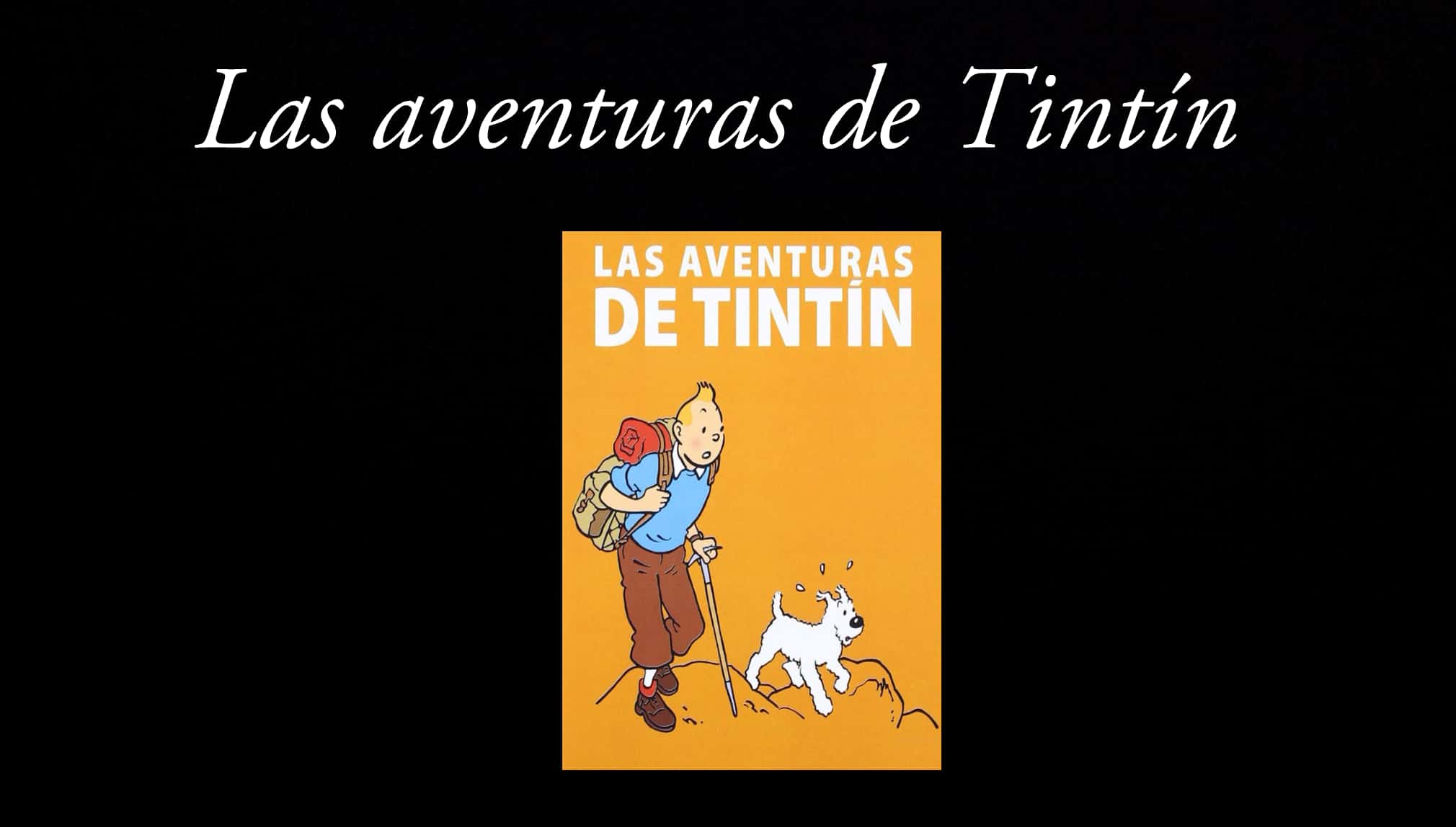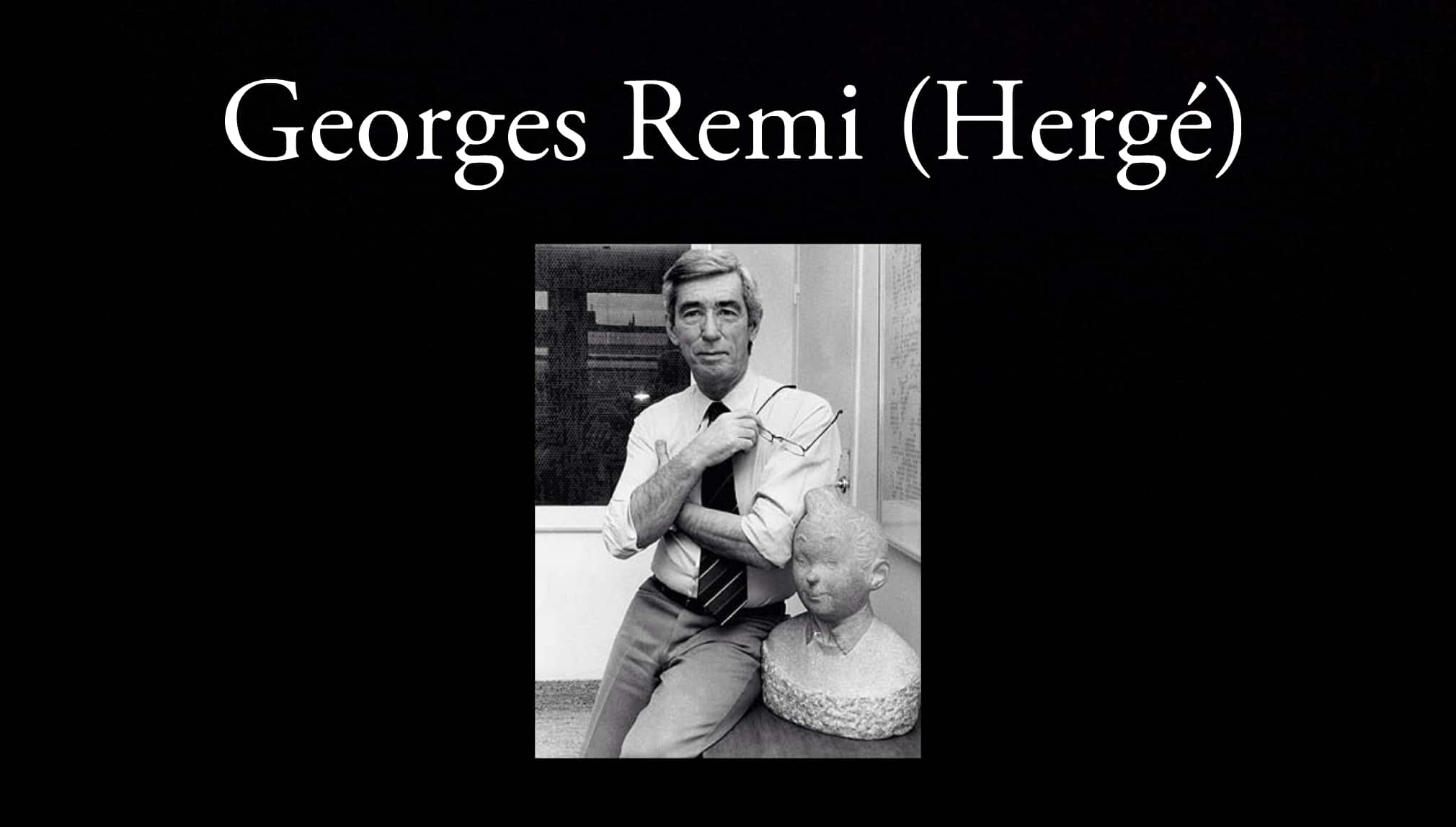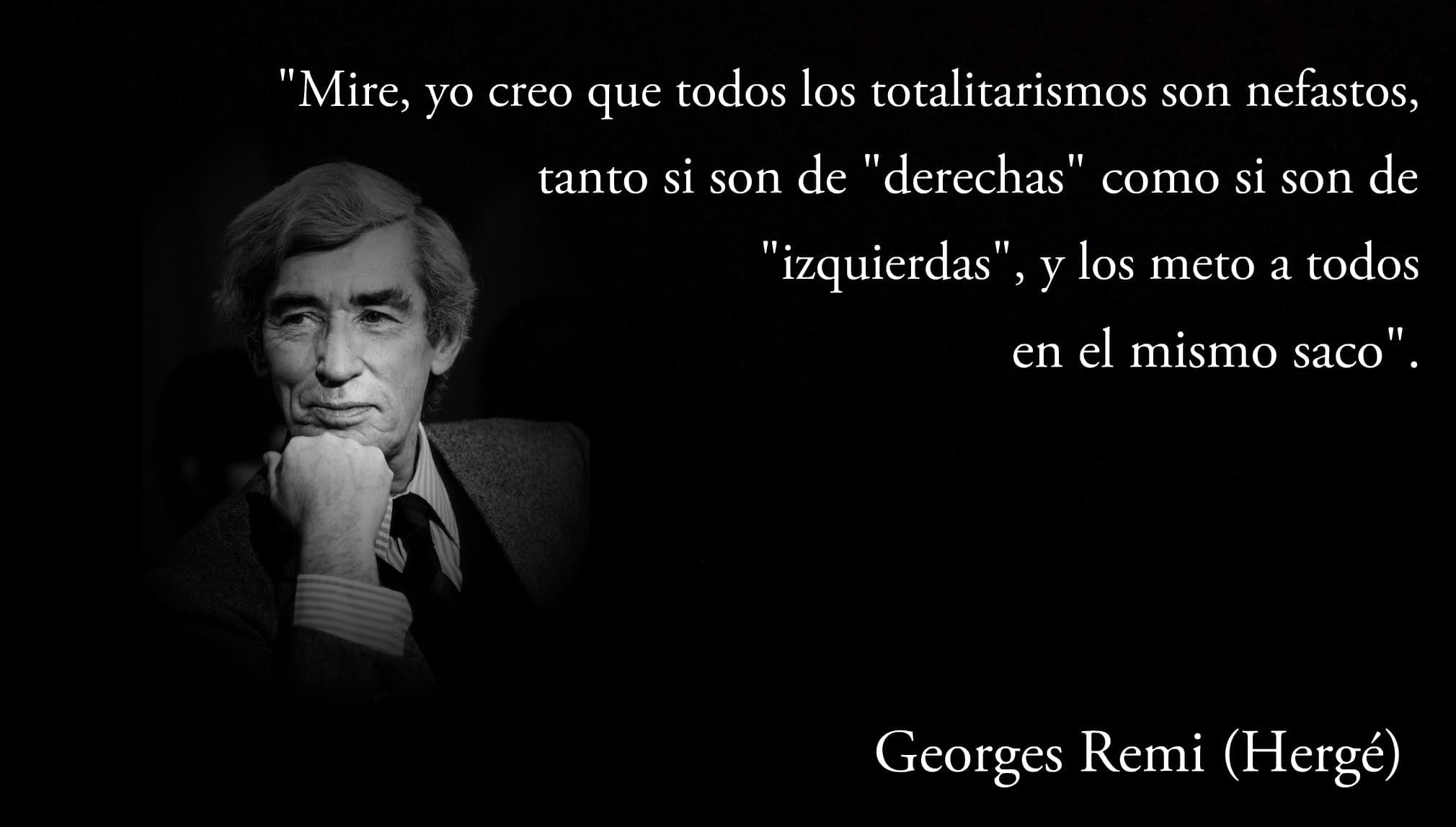
The Adventures of Tintin.
The Adventures of Tintin is a comic created by Belgian cartoonist Georges Remi (Hergé). This work is considered by many literary analysts as one of the most transcendent comics of the 10th century in Europe. On January 1929, 24, the first of 46 supplements published over the next 50 years appeared and translated into more than XNUMX languages. Its values of communication, equality and friendship have an everlasting validity.
However, the albums of Tintin - and Hergé - were never without controversy. They are accused of a right-wing and xenophobic perspective, with descriptions of countries, people and cities, based on stereotypes. This was demonstrated by the lawsuit filed in 2007 by a citizen of Congolese origin. Who requested the volume ban Tintin au Congo, for racist (Óscar Gual Boronat, 2011).
About the author, Georges Remi, Hergé
Georges Prosper Remi was born in Etterbeek, Belgium, on May 22, 1907. His primary studies coincided with the development of the First World War. During his adolescence he was part of the Boy Scouts of Belgium; later, he joined the Federation of Catholic Boy Scouts. This change - as well as the obligation to attend secondary school in a religious institute, the St. Boniface- was caused by pressure from his father, Alexis Remi.
First publications
The scout movement and Catholicism had a decisive influence on his personality and his work. His first published comics date back to 1922, they appeared in le boy scout, signed under the pseudonym “Hergé” (pronunciation of his initials RG, in French). Remi continued to make modest contributions to the aforementioned monthly magazine through illustrations of his articles and, on some occasions, of the cover.
In that same magazine it was published (from July 1926 to the beginning of 1930) Totor, CP of the bumblebees, considered his first official series. A year earlier, Remi also joined as a contributor to the ultra-conservative church lineup newspaper. Le XXème Scièle. Work that he interrupted between mid-1926 and the end of 1927 while he served in the military service in the First Regiment of hunters on foot.
The appearance of Tintin and Milo
On January 10, 1929, Tintin and his Fox terrier, Snowy, in the youth supplement Le Petit Vingtième de Sciele. Actually, it is about his character Totor - with some letters of his name modified - turned reporter and sent with his canine companion to the Soviet Union. It meant the first of the 24 albums that would come to make up the popular and controversial comics of The Adventures of Tintin.
Hergé's other known works are The Adventures of Jo, Zette and Jocko (5 albums) and Quique and Flupi (12 albums). Both titles were developed in parallel with Tintin, but they did not have the circulation of the Belgian reporter and Milo. According to Coronado-Morón et al. from the University of Malaga, “Tintin is an emblematic case of youth comics that has influenced the values of young people and adolescents of various generations”. Not for nothing did it become a essential work within the genre.
Albums The Adventures of Tintin
The list in the following paragraphs presents a chronological order based on the first appearance (some productions were interrupted for military and / or personal reasons). Also The regions visited by Tintin are mentioned with some connotations of each publication. "Always, real countries and cities where communication and friendship became possible" (Coronado-Morón et al. 2004).
Tintin in the Land of the Soviets (1929 - 1930)
Tintin and Snowy venture into the heart of the USSR, repeatedly showing the abuses of the communist regime. The peak moment of the play had its representation with the arrival by train to Brussels of a boy scouts Fifteen years old. The staging of Tintin's return to Belgium took place on May 30, 1930 and catapulted the success of the comic strip.
Tintin in the Congo (1930 - 1931)
One of Hergé's most controversial publications for his complacent vision of Belgian colonialism in Africa and the excessive use of stereotypes. Tintin's journey in the Congo introduces the character's bombastic and extraordinary trait, when he ends up involved with the resolution of an international crime. In contrast, the critical description of international drug and arms trafficking enhances the argument created by Remi.
Tintin in America (1932)
The development of this comic presents two great contrasts. On the one hand, Tintin dismantles an entire international criminal organization led by Al Capone from Chicago. On the other hand, the eviction of the last Red Indians from their original lands due to the discovery of oil is reported with detraction. Consequently, a natural terrain that was once grass is transformed into a grotesque city of concrete.
Pharaoh's cigars (1933 - 1934)
It takes place in three exotic settings traveled by Tintin and Snowy on their own initiative and not on a job commission: Egypt, India and China. In this album the characters of Hernández and Fernández make their debut and the antagonist billionaire villain Rastapopoulos appears with greater relevance.
The Blue Lotus (1934)
It is considered by many comic book fans as a masterpiece. Remi relied on the crucial documentary collaboration of Chinese student Zhang Chongren to produce it. The core of his story sought to eliminate Western prejudices towards the Chinese and openly criticizes the colonialism of Japan in China.
Broken ear (1935 - 1937)
Remi was inspired by the Chaco War that pitted Bolivia and Paraguay (referred to as San Theodoros and Nuevo Rico, respectively) between 1932 - 1935. Hergé also invented an Amerindian ethnic group - the Arumbaya - and adds another famous character to the comic, General Alcázar. In this way, he continued with the argumentative evolution and rigor in the anthropological and archaeological investigations demonstrated in predecessor albums.
According to Barragán (2008), “… in the case of South America, there is no doubt that in parallel with the adventures of the young reporter a fierce satire has been constructed against the militaristic caudillismo that contributed to withering the emergence of authentic democracies that allowed to overcome the historical conditions of poverty and uprooting ”.
The black island (1937 - 1938, 1943 and 1965)
Due to its setting errors, three editions were needed for the final release of this album in 1965. The events take place in Scotland, with unequivocal accusations against Hitler's expansionism in the days before World War II. The villain is Dr. Müller, of German origin, in the middle of a story focused on espionage.
Ottokar's Scepter (1938 and 1947)
In this album, Remi continues his criticism of Nazi expansionism due to the forced accession of Austria (1937) and Czechoslovakia (1938) to the Third Reich. The analogy is achieved by the imaginary kingdom of Syldavia, annexed to Bolduria due to the ambition of the dictator Müsstler (Mussolini - Hitler). Likewise, Syldavia was very relevant in later albums, as well as the appearance of the main female character of the saga, Bianca Castafiore.
In the land of black gold (1940, 1949 and 1971)
The publication of this album was interrupted by the German invasion of Belgium. Hergé was able to resume this story almost a decade later and added some details to it in the final edition of 1971. In the first edition, the events take place in Palestine, but the final installment takes place in a fictional Arab country, Khemed. Two important characters are introduced there: Emir Mohammed Ben Kalish Ezab and his first-born, Prince Abdallah.
The crab with the golden claws (1940)
It was the first of the controversial albums published by Hergé for the newspaper Le Soir, controlled by German occupiers in Belgium during the war. It features the debut of the iconic Captain Haddock, who would go on to be a fairly important character in the rest of the saga.
The mysterious star (1942)
It was the first of his albums to be published in color. It tells of the search for a meteorite by two rival teams - European and American - of scientific research. The album's main villain, Blumenstein, caused Hergé great criticism due to the character's Jewish origin. Although (to add insult to injury), the antagonist was later renamed "Bohwinkel", it still turned out to be a surname with Semitic roots.
The secret of the unicorn (1942 - 1943)
Tintin, Snowy and Haddock go on the trail of an enigma left by an ancestor of the XNUMXth century captain, the knight Francisco de Hadoque. The resolution could lead them to Red Rackham's treasure. For this reason, they must gather three identical models of the knight's ship, however, some very dangerous and unscrupulous criminals pursue the same purpose. This title was later made into a film by Steven Spielberg.
Rackham the Red's Treasure (1942 - 1943)
Remi presented in this work the emblematic professor Silvestre Tornasol, based on the physiognomy of the famous doctor Auguste Piccard. The character is a somewhat distracted and incoherent scientist who would make significant appearances in other stories. Paradoxically, the treasure sought by Tintin and his friends in this album is in Moulinsart Castle, owned by the ancestors of Captain Haddock.

Georges Remi (Herge).
The seven crystal balls (1943 - 1944 and 1946 - 1949)
Tintin returns to South America to find out about the curse of Rascar Capac, which fell on the archaeologists who were investigating the Inca tomb. During the publication of this album Hergé was accused several times of collaboration with the Nazis. Despite the enormous drawback, it is undeniable that it is a remarkable work from a documentary point of view.
In this regard, Barragán (2008) stated that “… the rigor in the anthropological and archaeological research of the team led by Hergé is a sign of their interest in claiming the cultural heritage of these nations that has been the object of constant looting by the European intelligentsia. " Therefore, it is a clear sign of Hergé's "deeply self-critical" attitude.
Target: the Moon (1950 and 1951)
It was the first publication made by the Hergé Studies, in which, he had an excellent team of collaborators led by Bob de Moor. It is a science fiction story in keeping with the space race of the time that required extensive and detailed investigation. To such an extent that the Belgian author had to interrupt his work for 18 months between 1950 and 1951 due to physical and mental exhaustion.
Landing on the Moon (1952 - 1953)
The narrative continues after the construction of the nuclear powered rocket completed by Dr. Calculus's team in the kingdom of Syldavia. Then, Tintin, Snowy, Haddock, Tornasol and, the self-invited, Hernández and Fernández embark on a journey that takes them to step on the moon. It is worth noting the impressive and numerous similarities that occurred between Hergé's story and the real mission of Apollo XI 16 years later.
The Calculus affair (1954 - 1955)
It is an espionage tale focused on the cold war. Remi takes the viewer back to an imaginary nation, Borduria, under the ironclad autocracy of a communist dictator much like Stalin. Part of its plot takes place in Geneva, Switzerland, and important new characters appear, such as the twisted Colonel Sponsz.
Coke stock (1956 - 1958 and 1967)
Tintin returns to Khemed, the fictional Arab country. Although the argument is clearly positioned against slavery and arms trafficking, Remi again received criticism for his stereotypes of the African population. In particular, the aim was to denounce the hardships suffered by African Muslims during their pilgrimage to Mecca. In the 1967 edition, certain passages are deleted and the way people are described is changed.
Tintin in Tibet (1958 - 1959)
By the time this album was published, Tintin's fame had reached international significance. The cartoon denounces the situation in Tibet, which was invaded by China during 1949 and led to the exile of the Dalai Lama in India. The story shows Tintin willing to put his life at risk in order to save his friend Tchang (from The Blue Lotus).
The jewels of the Castafiore (1961 - 1962)
The events take place at Captain Haddock's residence, Moulinsart Castle. It is the only album in the saga that does not relate a journey and whose plot does not contain a mystery to be solved. However, it was well received by fans of the series. Equally, Remi was praised for his proper depiction of gypsies.
Flight 714 to Sydney (1966 - 1967)
In the eyes of many fans of the series, it represents Tintin's poorest album. However, it does have some interesting news, especially during the time of its publication. It tells of the appearance of some extraterrestrial beings, plus a new irruption of the villain Rastapopoulos and two new characters, Laszlo Carreidas and Mik Ezdanitoff.
Tintin and the rogues (1975 - 1976)
The Belgian reporter with his faithful Fox Terrier returns to San Theodoros, where he meets memorable characters from Broken ear. In this publication, the image of the protagonist of the saga is transformed according to the fashion of the time, with jeans-style pants. In addition, Tintin wears a helmet with the symbol of peace and becomes a yoga practitioner.

Quote by Georges Remi (Hergé).
Tintin and the Alpha Art
For the elaboration of this album, Hergé carried out extensive artistic documentation carried out during his foray into painting. Tintin and the Alpha Art focuses on research around contemporary art and religious congregations. Sadly, Remi was unable to complete this work because his health was seriously impaired by the leukemia.
Georges Prosper Remi died in Woluwe-Saint-Lambert, Brussels, Belgium, on March 3, 1983. The author's widow, Fanny Vlamnick, received all the rights to the character Tintin and all his comics. Who was Hergé's second wife decided to publish Tintin and the Alpha Art in 1986, just as her late husband left it. Currently, Vlamnick is Remi's universal heir and manages his intellectual property through the Hergé Foundation.